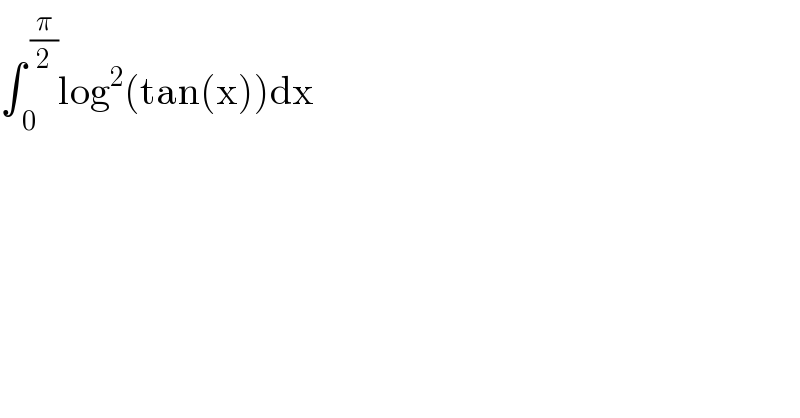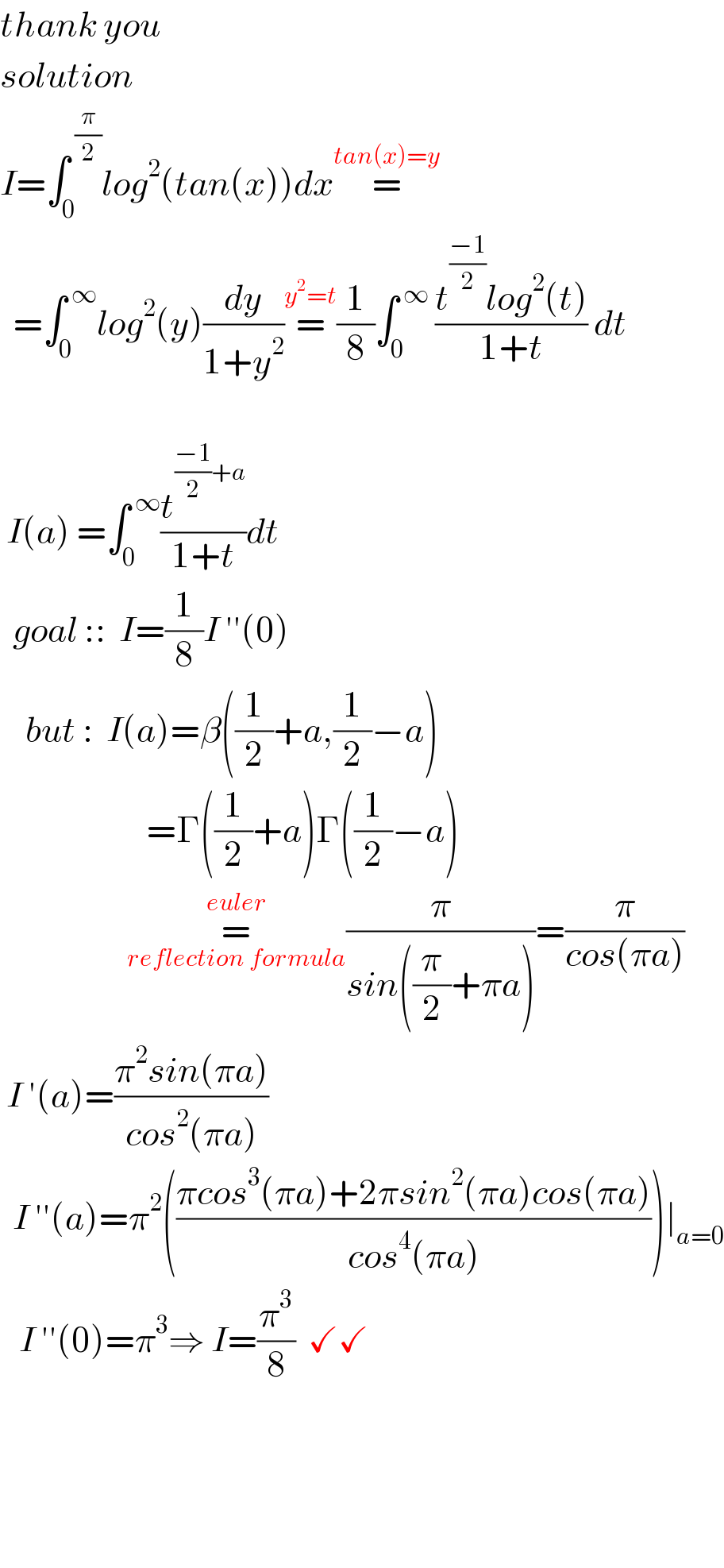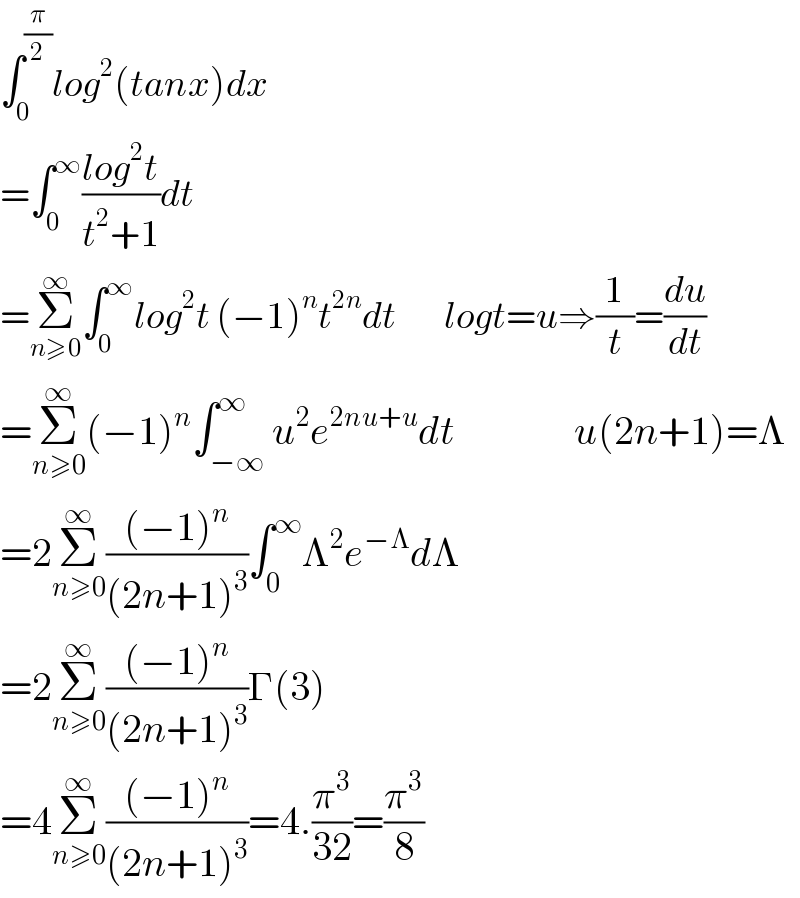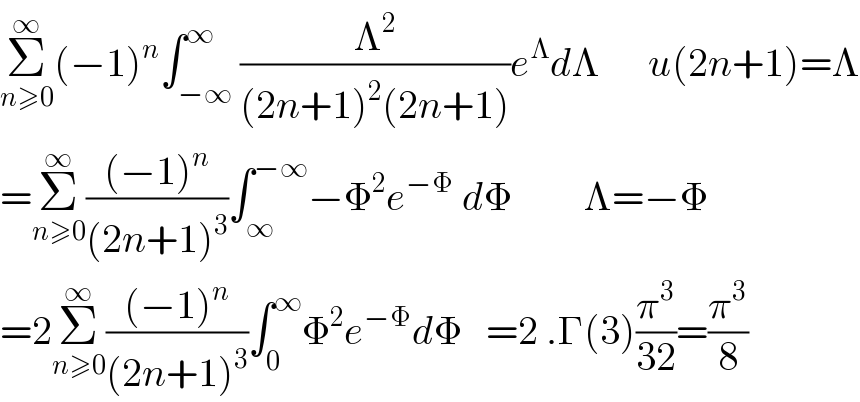Question Number 123159 by Lordose last updated on 23/Nov/20

Answered by mnjuly1970 last updated on 23/Nov/20

Commented by Lordose last updated on 23/Nov/20

Commented by mnjuly1970 last updated on 23/Nov/20

Commented by Dwaipayan Shikari last updated on 23/Nov/20

Commented by mnjuly1970 last updated on 23/Nov/20

Answered by Dwaipayan Shikari last updated on 23/Nov/20

Commented by mnjuly1970 last updated on 23/Nov/20

Commented by Lordose last updated on 23/Nov/20

Commented by Dwaipayan Shikari last updated on 24/Nov/20

Answered by mathmax by abdo last updated on 23/Nov/20
![A =∫_0 ^(π/2) ln^2 (tanx)dx changementtanx=t give A =∫_0 ^∞ ((ln^2 (t))/(1+t^2 ))dt =∫_0 ^1 ((ln^2 (t))/(1+t^2 ))dt +∫_1 ^∞ ((ln^2 (t))/(1+t^2 ))dt (→t=(1/x)) =∫_0 ^1 ((ln^2 (t))/(1+t^2 ))dt −∫_0 ^1 ((ln^2 (x))/(1+(1/x^2 )))(−(dx/x^2 )) =2∫_0 ^1 ((ln^2 (x))/(1+x^2 ))dx =2∫_0 ^1 ln^2 (x)(Σ_(n=0) ^∞ (−1)^n x^(2n) )dx =2Σ_(n=0) ^∞ (−1)^n ∫_0 ^1 x^(2n) ln^2 (x)dx u_n =∫_0 ^(1 ) x^(2n) ln^2 (x)dx =[(x^(2n+1) /(2n+1))ln^2 (x)]_0 ^1 −∫_0 ^1 (x^(2n+1) /(2n+1))((2lnx)/x)dx =−(2/(2n+1))∫_0 ^1 x^(2n) ln(x)dx =−(2/(2n+1)){[(x^(2n+1) /(2n+1))lnx]_0 ^1 −∫_0 ^1 (x^(2n) /((2n+1)))dx} =(2/((2n+1)^3 )) ⇒ A =4 Σ_(n=0) ^∞ (((−1)^n )/((2n+1)^3 )) rest to find tbe value of this serie by fourier....](https://www.tinkutara.com/question/Q123195.png)
